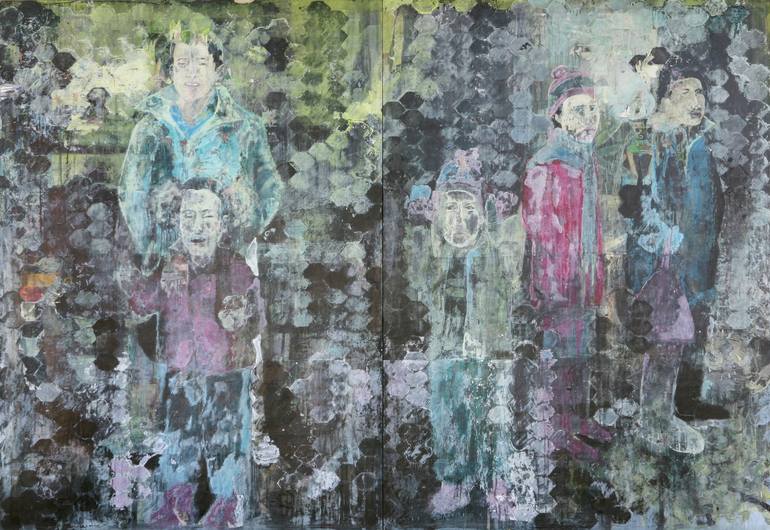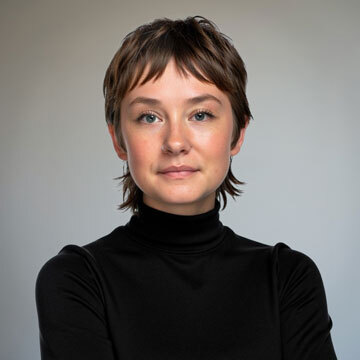


589 Views
14
View In My Room
Painting, Acrylic on Canvas
Size: 126 W x 86.6 H x 0.8 D in
Ships in a Crate
$19,380
Shipping included
14-day satisfaction guarantee
Trustpilot Score
589 Views
14
Artist Recognition

Artist featured in a collection
ABOUT THE ARTWORK
DETAILS AND DIMENSIONS
SHIPPING AND RETURNS
Painting from 2016 made after a selection of photos showing migrants in front of a wire fence. PAINTINGS 2016 “In the past century, which was marked by major changes and rapid progress, (especially) two main modes of artistic creation came to the forefront from the abundance of concurrent styles,...
Year Created:
2016
Subject:
Mediums:
Multi-paneled Painting, Acrylic on Canvas
Rarity:
One-of-a-kind Artwork
Size:
126 W x 86.6 H x 0.8 D in
Number of Panels:
2
Ready to Hang:
Not Applicable
Frame:
Not Framed
Authenticity:
Certificate is Included
Packaging:
Ships in a Crate
Delivery Cost:
Shipping is included in price.
Delivery Time:
Typically 5-7 business days for domestic shipments, 10-14 business days for international shipments.
Returns:
14-day return policy. Visit our help section for more information.
Handling:
Ships in a wooden crate for additional protection of heavy or oversized artworks. Artists are responsible for packaging and adhering to Saatchi Art’s packaging guidelines.
Ships From:
Slovenia.
Need more information?
Need more information?
We have all heard the saying that something is as boring as "watching the paint dry." Well, I literally do that - I watch the paint dry. Watching the paint dry is the core of my painting technique. I am painter, art theorist, journalist born at 9:55 AM, January the 17th, 1969 in Ljubljana, Slovenia. This is all of my art production so far displayed in semi-chronological order. I try to maintain strict quality control so I have destroyed and still destroy more then I preserve. There are several video clips about my work available on my YouTube channel. There are articles on Academia Edu website. I was the worst student Ljubljana's Academy of Fine Arts could ever have. I barely passed the last year with the lowest grades. After finishing studies I wanted to drop art altogether. I got a job at the national TV of Slovenia where I still work as a journalist covering visual arts, architecture, comics, classical and contemporary music etc. After the millennium I started painting again. At first under strong influence of Basquiat, whose show I saw in Trieste at the end of the nineties. Actually it was Basquiat's show that pushed me back again into producing art. After 2003 I wanted to get rid of Basquiat's influence. So, one time I carried this one piece that had again been done in his style under water, while it was still wet. Water partially washed the image away. There was a silent scream in my head: "Look how the image dissolves." Washing the images away with water became my dominant painting technique. There were a couple of series of paintings made between 2004 and 2006 using this technique in a variety of ways. Between the beginning of 2007 and the beginning of 2010 there was a pause though. I was trying to expand on this idea and technique but wasn't successful. I realized later that I was trying too hard to show my invention as such. In early 2010 I came up with the necessary evolution. Since then, my work procedure can be described as follows: I make an image with paint. I then wait a couple of minutes and till some of it has dried. I then wash the image away with water. Patches of paint remain, of course. I then repeat this procedure with another paint until something gets formed out of the patches. Why is all of this important? This procedure of mine gets me beyond simple illustrating. It makes the onlooker feel as if the images got on the canvas all by themselves.
Artist Recognition

Artist featured by Saatchi Art in a collection
Why Saatchi Art?
Thousands of
5-Star Reviews
We deliver world-class customer service to all of our art buyers.
Global Selection of Original Art
Explore an unparalleled artwork selection from around the world.
Satisfaction Guaranteed
Our 14-day satisfaction guarantee allows you to buy with confidence.
Support Emerging Artists
We pay our artists more on every sale than other galleries.
